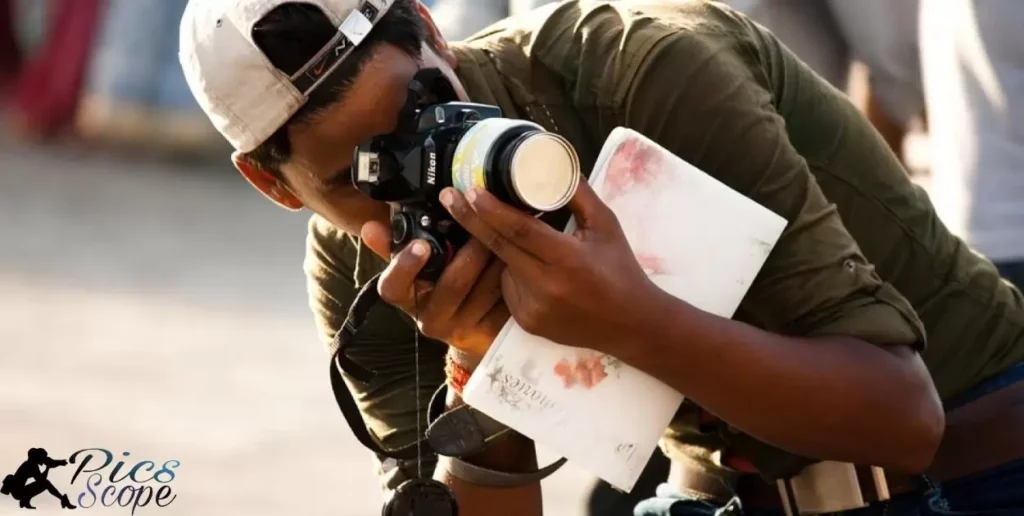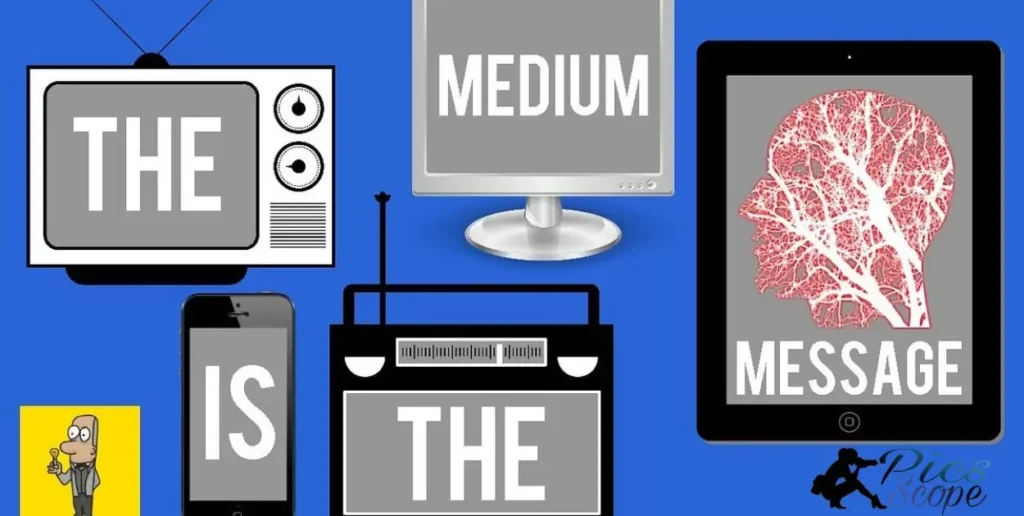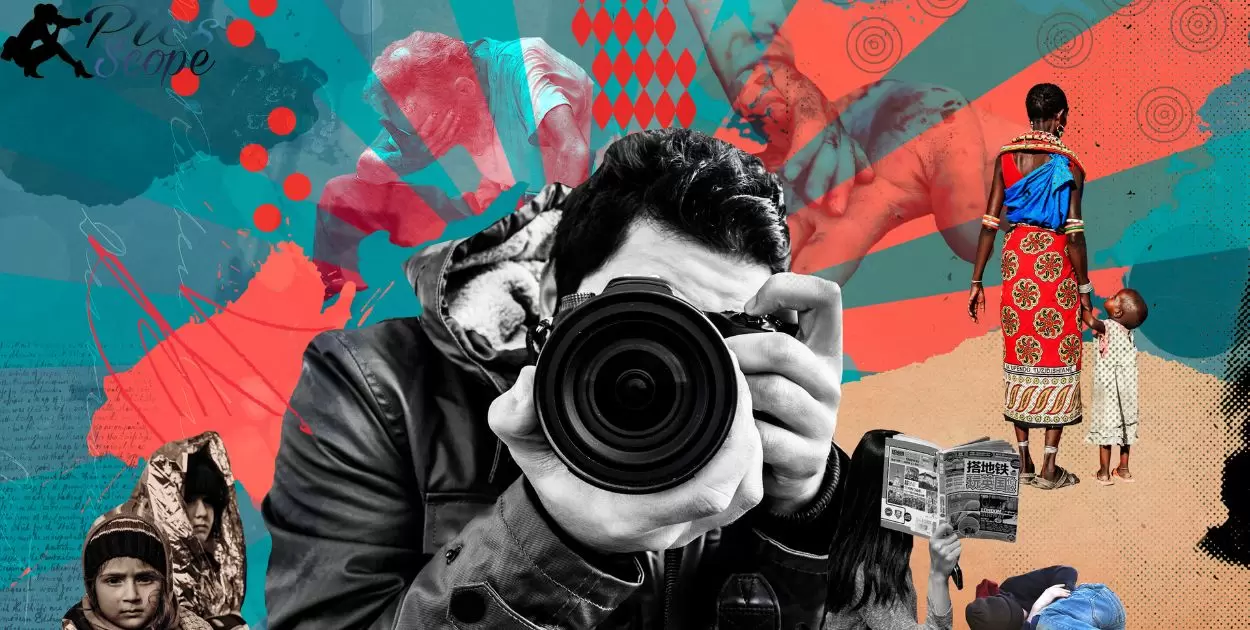Photojournalism is the practice of telling true stories through photographs. It captures significant moments in time which inform people about events and issues around the world. Images often convey powerful messages that words alone cannot.
Why Is Photojournalism Such An Important Part Of The Media?” As the saying goes, a picture is worth a thousand words. Impactful images connect with readers on an emotional level and evoke a visceral response. Photojournalism brings human struggles and triumphs to life. It shines a light on people and places that may otherwise go unseen.
Photojournalism uniquely immerses audiences in issues and events. Photographs provide a window into worlds beyond our own experience. They introduce people and places we may never visit. Compelling images can shift perspectives and prompt action. This visual storytelling is indispensable for spreading awareness.
Why is Photojournalism Considered Impactful?
Photojournalism is impactful because it captures real world events as they happen. The images provide a visual record of history, bringing the viewer into the scene. Good photojournalism conveys the emotion and urgency of news events through compelling, timely images. This makes the stories memorable and more likely to inspire action or change.
How Does Photojournalism Evoke Emotion?
Images have power. Photojournalism evokes emotion by showing people the reality of events, not just telling them. The visuals allow the viewer to connect on a deeper, more personal level. Photos of disasters, suffering, or triumph have the ability to move people in a way words cannot.
What Makes Photojournalism Memorable?
Photojournalism is memorable because humans are visual creatures. We connect deeply with images, especially powerful ones that capture pivotal or emotional moments. Iconic news photos stick in our minds precisely because they encapsulate an event in one perfect shot. The composition and content come together to create an unforgettable visual snapshot.
Can Photojournalism Prompt Social Change?
Yes, impactful photojournalism can shine a light on issues and prompt social change. By capturing injustice, suffering, or events that spark moral outrage, photos motivate people to take action. Iconic images from the civil rights movement, Vietnam war protests, and other pivotal times brought key issues to the forefront of public discourse. Photojournalism made these causes real to more people, inspiring many to work for positive change.
How Does Photojournalism Tell Stories?
Photojournalism tells stories through images. The photos capture key moments that convey a narrative when viewed together. Single images can also tell powerful stories on their own. Good photojournalism should engage the viewer and communicate a clear message.
Planning is important for visual storytelling in photojournalism. The photographer must select impactful topics and plan diverse, compelling shots. Symbols can help strengthen the story’s message. Ordering images intentionally creates a narrative flow. Careful planning improves quality.
What Moments Does Photojournalism Capture?

Photojournalism captures real moments to tell authentic stories. It focuses on documenting events, environments, emotions and more. Powerful imagery resonates with viewers.
Specific techniques like composition, lighting and perspective enhance storytelling.
Sequencing images creates narratives across a series. Single images also capture pivotal moments. Diverse imagery keeps viewers engaged. Real moments connect with audiences.
How Do Images Convey Narratives?
Images convey narratives through composition and sequencing. Thoughtful framing and perspectives guide the viewer’s eye to key details that reveal stories. Series of images unfold sequentially to build larger narratives, like chapters in books. Standalone images also convey stories through emotion and symbolism captured in decisive moments.
What Issues Can Photojournalism Highlight?
Photojournalism can highlight diverse societal issues. It gives visibility to underrepresented groups and neglected topics. Images create empathy regarding real-world problems.
From celebrations of life to explorations of social justice, photojournalism reveals stories. It connects audiences to people and places they may not otherwise encounter.
Why is Photojournalism Considered Impactful?
Photojournalism is impactful because it captures real world events as they happen. The images provide a visual record of history being made. They convey a sense of “being there” and witnessing the event firsthand. This immediacy and authenticity gives photojournalism great power to inform and move people. A single photo can spark emotion and change minds.
How Does Photojournalism Evoke Emotion?
Images often connect at a deeper emotional level than words alone. Photojournalism captures pivotal moments that reveal the drama of human experience – grief, triumph, suffering, compassion. The visual details evoke empathy and allow the viewer to imagine themselves in the scene.
What Makes Photojournalism Memorable?
Compelling photojournalism crystallizes the significance of people and events. Great images provide visual proof of the stories that shape our times. They encapsulate historical turning points and capture the zeitgeist. The most memorable photos have bold graphic elements that pack an immediate visual punch. Golden Hour In Photography is known for its soft, golden light that flatters portraits.
Can Photojournalism Prompt Social Change?
Yes, by bringing awareness to injustice or suffering, photojournalism can galvanize public opinion and prompt reform. Iconic images from the Civil Rights Movement, Vietnam War protests.
Tiananmen Square gave momentum to calls for political change. Modern photojournalists continue this mission by giving visual evidence to spur humanitarian response and policy change on issues like climate crisis, poverty, and migration.
Why Is Photojournalism More Engaging Than Text?
Photojournalism drives more reader engagement than text. Research shows audiences view all images in a story, but only read about half the text. Photos provide a more holistic, emotional view into events. They crystallize a moment in time that text struggles to convey. Images are universal and transcend language barriers.
Why Do Images Often Resonate More Than Words?
Photos evoke connection and feeling. They illuminate meaning and context for issues and events. Images let audiences see through the photographer’s eyes, creating empathy and understanding. A single photo can furnish stand-alone commentary without needing text. Dramatic images impress themselves on our consciousness, stirring sentiment and reaction.
How Does Photojournalism Boost Media Impact?

Compelling images enhance storytelling in the news. Photos add immediacy and authority that text lacks. They provide supporting visual details that text cannot. Photojournalism brings urgency and investigative power to journalism. Images offer corroborating proof that builds credibility. Photos allow news outlets to cover unfolding events as they happen.
Can Compelling Images Prompt Action?
Yes, dramatic images raise awareness and inspire change. Iconic photos can catalyze public discourse and collective response. Photos that expose wrongs or capture pivotal world events drive people to act. Images give issues a human face that mobilizes concern. Compelling photojournalism impacts attitudes, policy, and progress on societal problems.
How Vital Is Photojournalism For Informing The Public?
Photojournalism is vital for informing the public. It conveys stories through images that words cannot capture. Photojournalism brings emotional power and immediacy to news events. It can instantly inform readers and spur social change. Iconic images from major events are etched into public memory.
Why Is Photojournalism An Essential Part Of Journalism?
Photojournalism is essential to journalism as it visually documents current events. Images add context and meaning that text alone cannot provide. Photos bear witness and provide evidence on issues and events. They convey truth and reality in a universally understood visual language. Photojournalism enhances reporting and storytelling in the media.
How Does Photojournalism Uniquely Spread Awareness?
Photojournalism spreads awareness through compelling images that evoke emotion and understanding across languages and cultures. Iconic photos can catalyze social action and change minds. Photojournalism grants visual access to people, places and events that audiences otherwise couldn’t experience. The memorable nature of images uniquely spreads awareness.
Would The Media Be As Meaningful Without Photojournalism?

The media would lose significant impact without photojournalism. Images create more vivid and engaging storytelling. Photos provide documentation and proof that add credibility. Audiences connect more deeply to stories when photos put faces and imagery to events. Photojournalism makes abstract news concrete and relatable. It is a vital part of meaningful media coverage.
FAQ’s
Why is photojournalism an important part of the media?
Photojournalism visually conveys news stories through compelling images that resonate with audiences.
Why is photojournalism such an important part of the media quizlet?
Photojournalism adds emotional impact and credibility to news reporting through photographic documentation of events.
Why is photojournalism such an important part of the media brainly?
Photojournalism grants visual access to news events, people and places that audiences otherwise couldn’t experience firsthand.
Why did photojournalism become so influential?
Photojournalism became influential with the advent of smaller, more portable cameras and the rise of picture-based magazines in the 1920s.
How does photojournalism uniquely spread awareness?
Photojournalism spreads awareness uniquely through memorable images that transcend languages and cultures to inform, catalyze action and change perspectives.
Conclusion
Photojournalism is a vital part of media reporting. Photojournalism uses compelling, timely images to convey news stories and events. The memorable nature of photos spreads awareness widely. Images enhance journalism by providing visual proof and stirring emotion.
Photojournalism plays an essential role in impactful media coverage. Photos document history and catalyze social change. The universal language of images transcends cultures to inform audiences. By capturing the decisive moments of news events, photojournalism makes the media more vivid, credible and meaningful.







